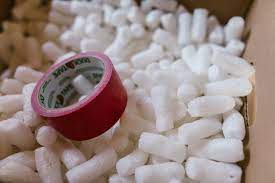Large gaps and voids can pose challenges in construction, whether in residential homes, commercial buildings, or DIY projects. Filling these gaps is not only essential for aesthetic reasons but also for maintaining structural integrity, and energy efficiency, and preventing potential issues such as drafts, moisture intrusion, and pest ingress. In this article, we will explore various filler materials suitable for addressing large gaps, discussing their properties, applications, and considerations for optimal results.
Understanding the Importance of Filling Gaps:
Large gaps, whether in walls, windows, or other structures, can compromise the efficiency of a building. Unfilled gaps may allow air leakage, leading to energy inefficiency and increased utility bills. Additionally, these gaps can provide entry points for pests and allow moisture to infiltrate, potentially leading to structural damage and mold growth.
Expanding Foam Sealants:
Expanding foam sealants are versatile and effective for filling large gaps. These sealants typically come in spray cans and expand upon application to fill irregular spaces. They adhere well to various surfaces, creating a durable and airtight seal. It’s crucial to use an appropriate expanding foam type for the specific application, as some formulations are designed for indoor use, while others are suitable for outdoor applications.
Polyurethane Sealants:
Polyurethane sealants are known for their flexibility and durability. They adhere well to a variety of materials and can withstand movement, making them suitable for filling gaps in areas prone to expansion and contraction. Polyurethane sealants are available in various formulations, including those with specific properties such as high flexibility or resistance to UV exposure.
Acrylic Latex Caulks:
Acrylic latex caulks are widely used for filling gaps and cracks. They are easy to apply, paintable, and provide a cost-effective solution for indoor applications. While suitable for smaller gaps, acrylic latex caulks may not be the best choice for large voids or areas subject to significant movement.
Backer Rods:
Backer rods are cylindrical foam or rubber rods designed to fill large gaps before applying sealant. They provide support to the sealant, preventing it from sinking into deep voids and ensuring consistent adhesion. Backer rods are particularly useful in joints and expansion joints where movement is expected.
Mineral Wool Insulation:
In areas where insulation is needed along with gap filling, mineral wool insulation can serve a dual purpose. This material is fire-resistant, provides thermal insulation, and can be used to fill large gaps. Mineral wool insulation is available in various forms, including batts and loose-fill, making it adaptable to different applications.
Construction Adhesives:
Construction adhesives, available in tubes or cartridges, can be used to fill large gaps and bond materials together. These adhesives are often formulated for specific applications, such as bonding heavy materials or securing construction elements. Some construction adhesives also have gap-filling properties.
Considerations for Exterior Gaps:
When dealing with exterior gaps, it’s essential to choose a filler material that can withstand exposure to weather conditions. Weather-resistant sealants, such as those formulated with outdoor use in mind, should be applied to prevent issues like water infiltration. UV degradation, and temperature-induced expansion and contraction. Large gaps and voids
Professional Consultation:
In some cases, especially with larger or critical structural gaps, it may be advisable to consult with a professional contractor or structural engineer. They can assess the specific requirements of the project and recommend the most appropriate filler materials and techniques to ensure long-term stability and performance.
Regular Inspection and Maintenance:
Regardless of the filler material used, regular inspection and maintenance are crucial for ensuring the continued effectiveness of the gap-filling solution. Periodic checks can help identify any signs of wear, damage, or deterioration, allowing for timely repairs or reapplication as needed.
Conclusion:
Addressing large gaps in construction is a critical aspect of maintaining the integrity and efficiency of buildings. The choice of filler material depends on factors such as the size of the gap, the specific application, and environmental conditions. Whether opting for expanding foam sealants, polyurethane sealants, backer rods, or other materials. Careful consideration and proper application are key to achieving durable and effective gap-filling results. Regular maintenance and, when necessary, consultation with professionals ensure that gaps remain sealed, contributing to the longevity and performance of the structure.

